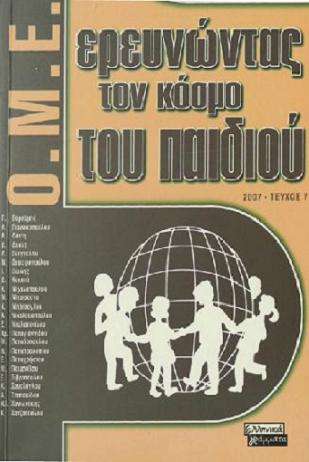Σχέση της κινητικής ευχέρειας και της κινητικής ευελιξίας κατά την εκτέλεση δημιουργικής κίνησης
Abstract
The criterion measures of motor creativity are motor fluency and motor flexibility. The aim of this study was to examine the relation between these two criterion measures. 84 preschool children participated in the experimental procedure. The two parameters of motor creativity, during the execution of locomotor skills and manipulative skills, were assessed using the Divergent movement ability test and the data were correlated using the Pearson correlation coefficient. The results revealed statistically significant correlation between motor fluency and flexibility in each movement task of the test, and for motor fluency between the two movement tasks. Children, who executed many different motor responses, had also the ability to produce motor solutions with different quality due to the activation of divergent and creative thinking. Physical education lesson can be a unique implement for development of creativity, through the application of an appropriate teaching procedure, with basic goal the learning activation of the children.
Article Details
- How to Cite
-
Τσαπακίδου (Aggeliki Tsapakidou) Α., Ζαχοπούλου (E. Zachopoulou) Ε., Αλεξίου (B. Alexiou) Β., & Τσομπανάκη (Th. Tsompanaki) Θ. (2003). Σχέση της κινητικής ευχέρειας και της κινητικής ευελιξίας κατά την εκτέλεση δημιουργικής κίνησης. Investigating the child’s World, 5, 175–183. https://doi.org/10.12681/icw.18125
- Issue
- Vol. 5 (2003)
- Section
- Scientific articles & educational projects

This work is licensed under a Creative Commons Attribution-NonCommercial 4.0 International License.
Authors who publish with this journal agree to the following terms:
· Authors retain copyright and grant the journal right of first publication with the work simultaneously licensed under a Creative Commons Attribution Non-Commercial License that allows others to share the work with an acknowledgement of the work's authorship and initial publication in this journal.
· Authors are able to enter into separate, additional contractual arrangements for the non-exclusive distribution of the journal's published version of the work (e.g. post it to an institutional repository or publish it in a book), with an acknowledgement of its initial publication in this journal.
· Authors are permitted and encouraged to post their work online (preferably in institutional repositories or on their website) prior to and during the submission process, as it can lead to productive exchanges, as well as earlier and greater citation of published work.




